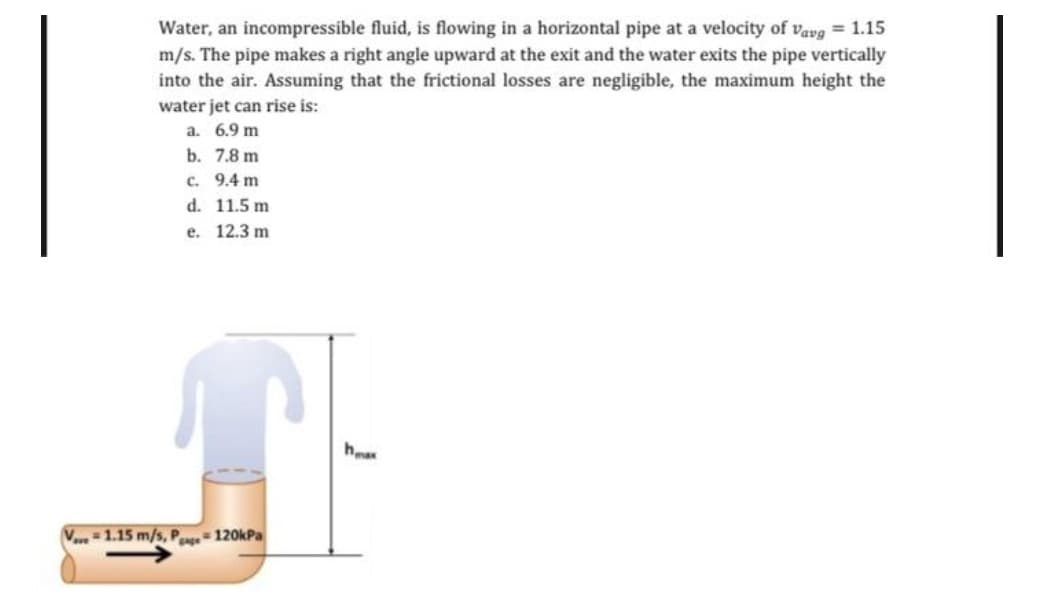Water, an incompressible fluid, is flowing in a horizontal pipe at a velocity of vavg 1.15 m/s. The pipe makes a right angle upward at the exit and the water exits the pipe vertically into the air. Assuming that the frictional losses are negligible, the maximum height the water jet can rise is: a. 6.9 m b. 7.8 m c. 9.4 m d. 11.5 m е. 12.3 m ha 1.15 m/s, P 120kPa
Water, an incompressible fluid, is flowing in a horizontal pipe at a velocity of vavg 1.15 m/s. The pipe makes a right angle upward at the exit and the water exits the pipe vertically into the air. Assuming that the frictional losses are negligible, the maximum height the water jet can rise is: a. 6.9 m b. 7.8 m c. 9.4 m d. 11.5 m е. 12.3 m ha 1.15 m/s, P 120kPa
Related questions
Question
Answer correctly within 30 minutes for upvote

Transcribed Image Text:Water, an incompressible fluid, is flowing in a horizontal pipe at a velocity of vavg = 1.15
m/s. The pipe makes a right angle upward at the exit and the water exits the pipe vertically
into the air. Assuming that the frictional losses are negligible, the maximum height the
water jet can rise is:
a. 6.9 m
b. 7.8 m
c. 9.4 m
d. 11.5 m
e. 12.3 m
hea
V1.15 m/s, P 120kPa
Expert Solution
This question has been solved!
Explore an expertly crafted, step-by-step solution for a thorough understanding of key concepts.
Step by step
Solved in 2 steps with 1 images
